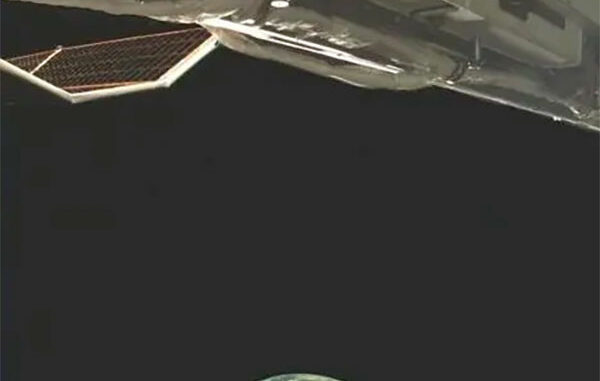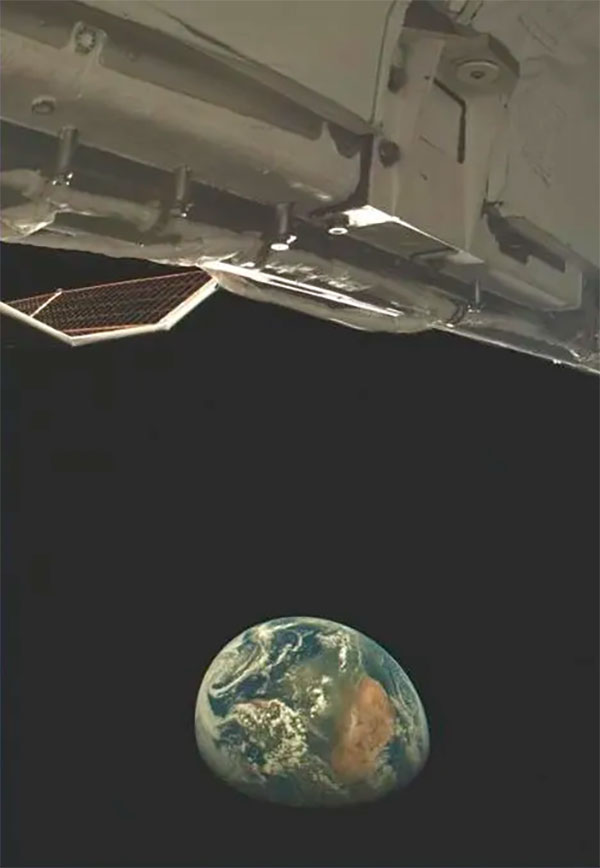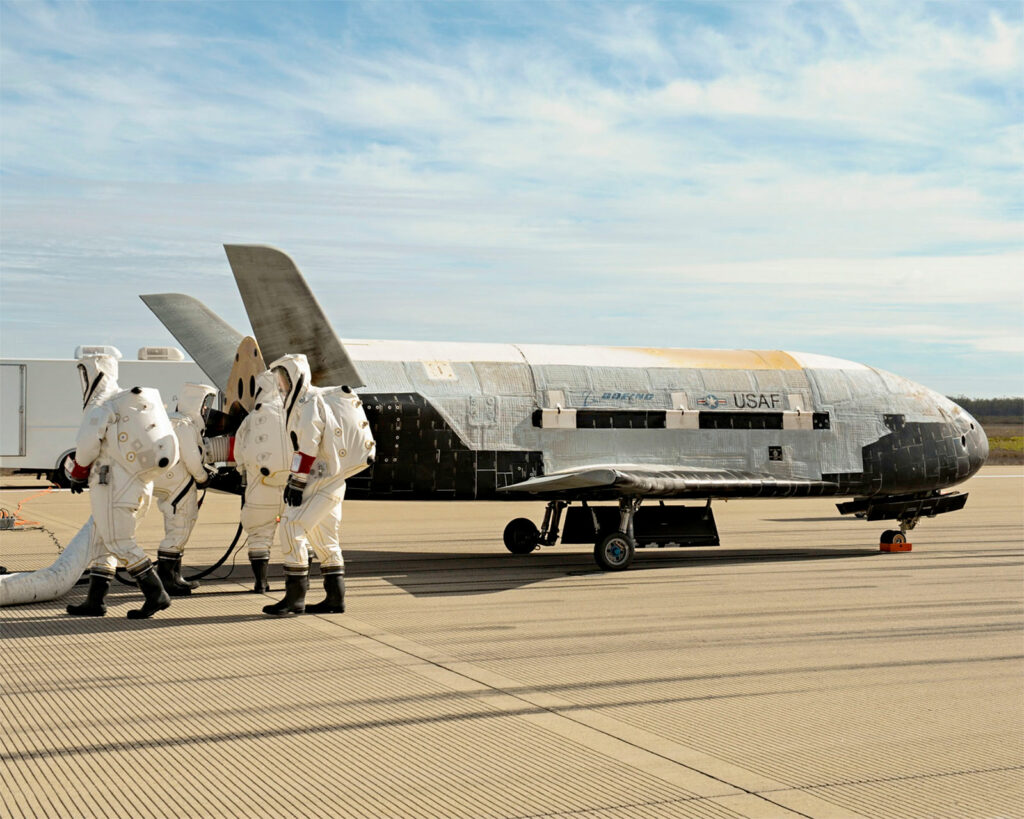
The US Space Force’s X-37B has released its first photo of the Earth, offering a rare glimpse into this secret high-elliptical orbit mission.
The X-37B, a US Space Force experimental spaceplane, recently shared a never-before-seen image of the Earth taken from space. The photo marks the first public disclosure of a terrestrial view captured by this secret craft. Currently on its seventh mission, the X-37B is in a highly elliptical orbit, testing aerobraking maneuvers to modify its orbit with minimal fuel consumption. These operations are aimed at improving our knowledge of space and studying the effects of radiation on various materials. The launch of this mission in December 2023 aboard a Falcon Heavy rocket enabled the X-37B to reach unprecedented orbital altitudes, exceeding 35,786 kilometers above sea level.

An unprecedented image of the Earth from the X-37B
For the first time, the US Space Force has released a photograph of the Earth taken by the X-37B, its highly classified experimental spaceplane. The image, captured during the aircraft’s seventh mission, offers a unique perspective of our planet from high orbit. The shot was taken while the X-37B was conducting experiments in a highly elliptical orbit, demonstrating its ability to operate at various altitudes and perform complex maneuvers. The on-board camera, mainly used to monitor the integrity of the aircraft, enabled this historic capture.
OTV-7 mission technical details
The seventh mission of the X-37B, designated OTV-7, began on December 28, 2023 with a launch from Kennedy Space Center in Florida, using a Falcon Heavy rocket for the first time. This configuration enabled the X-37B to reach a highly elliptical orbit, with a perigee (closest point to Earth) at 323 kilometers and an apogee (furthest point) at 38,838 kilometers, according to available data. This orbit enables the spacecraft to test new orbital regimes and extend its range of operations beyond traditional geostationary orbits. One of the major innovations of this mission is the execution of aerobraking maneuvers, where the X-37B uses atmospheric drag to modify its orbit while minimizing fuel use. These maneuvers are crucial for efficient fuel management and extending the duration of space missions.
Scientific and technological experiments
In addition to technology demonstrations, the OTV-7 mission is carrying several scientific experiments. Notably, NASA’s Seeds-2 experiment aims to study the effects of space radiation on plant seeds, providing essential data for future long-duration missions and the possibility of growing plants in space. In addition, the X-37B is testing advanced space domain awareness technologies, enhancing the United States’ ability to detect, track and identify objects in orbit. These capabilities are essential for national security and space debris management, a growing issue with the proliferation of satellites and space missions.

Strategic implications and future prospects
The disclosure of this image and the details of the OTV-7 mission illustrate the US Space Force’s increased willingness to be transparent about its space operations. This openness could be a response to internal calls for more proactive communication on military activities in space, especially in the face of space advances by nations such as China and Russia. China, for example, is developing its own spaceplane, the Shenlong, with capabilities similar to the X-37B, underlining the strategic importance of mastering these technologies. The X-37B’s success in complex, extended missions demonstrates the maturity of reusable space vehicle technologies, paving the way for future applications such as in-orbit maintenance, rapid satellite deployment or advanced intelligence missions. The ability to perform aerobraking maneuvers and operate in a variety of orbits offers unprecedented strategic flexibility, strengthening the United States’ position in space.
The publication of this first image of the Earth by the X-37B and the details revealed about the OTV-7 mission offer a rare insight into the capabilities and objectives of this secret spaceplane. The technological advances demonstrated, combined with increased transparency, could redefine space strategies and strengthen the U.S. position in the face of emerging challenges in space.
War Wings Daily is an independant magazine.